Vertebrate Biology #1 (Tree of Life)
1/131
Earn XP
Description and Tags
For Exam #1
Name | Mastery | Learn | Test | Matching | Spaced |
|---|
No study sessions yet.
132 Terms
What are the 4 unique traits of Chordates?
1)notochord
2) dorsol (hollow) chord
3)pharyngeal slits
4)postanal tail
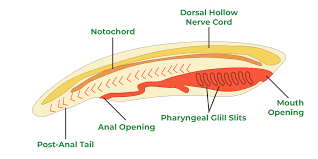
What are the 3 main supgroups of Phylum Chordata?
1)urochordata
2)subphylum cephalochordata
3) craniata
Subphylum Cephalochordata (Characteristics/What?)
Lancelets + amphioxus
-tiny eel like
-adults present all chordate characteristics
Subphylum Urochordata (Characteristics)
-NO BACKBONE (non vertebrates)
-Sessile marine (coral like)
-attach and filter
-adults don’t resemble chordates but juveniles do
Craniata (Vertebrata)
-Cephalization (brain w/skull(cranium))
-vertebral column (except lampreys and hagfish)
»protects spine and is a spot for muscle
Paedomorphosis
Keeping youth traits (into adult)
What are the 4 Key Evolutionary Features of Vertebrates?
1) Living internal skeleton (endoskeleton)
2) link between pharynx and breathing
3) well developed nervous system (brain and sense organs)
4) paired limbs (Move better)
Major transitions (4)
1)Jaws
2)lungs
3)limbs
4)amniotic eggs
Agnatha
Jawless
Jawed
Gnathostomata
Systematcs
The scientific study of the kinds and diversity of organisms, and their evolutionary relationships
(naming,describing,classifying organisms)
taxonomy
discipline in change of proving names for groups of organisms and establishing rules by which organisms are named
Binomial Nomenclature
Every organism has a two part name (genus and species)
Linnaeaus
Hierarchical classification
system of grouping species (kingdom>phylum>class>order>family>genus>species)
Species
-Typically similar characteristics
- a group of organisms that can naturally interbreed to produce fertile offspring
Thoughts Before Darwin
-species eternal and immutable
-few convenient morphological characteristics
-observed variations were NOT normal
19th Century (what happened??)
-RADICAL SHIFT
-species not eternal (fossils discovered)
-species were not immutable (breeding)
-variation common and important
Darwin
Evolution by natural selection
changes in variation in traits with population over time and between populations (divergence, speciation)
What are the 4 components of natural selection?
1) more individuals are born each generation that can survive & reproduce
2) trait variation among individuals
3)some trait variation is heritable
4) Trait differences are tied to fitness (Survival of the fittest)
Is natural selection random?
NO!!!!!!!
Is genetic variance (mutations) random?
May be
Consequences of Natural Selection
species share traits due to common ancestor and imply evolutionary relationships (phylogeny)
Post Darwinism Classification
Based on holmology NOT analogy
Homologous Structure
similarity due to ancestry (ex. limbs)
Analogous structure
Similarity NOT from ancestry
Similarity from convergent evolution-environments) (ex. bird/bat wings)
Phylogenetics
study of evolutionary relationships among species
Monophyletic
Most recent common ancestor and ALL descendants
(birds)
Paraphyletic
Most recent common ancestor but NOT all descendants
(example fish, reptiles)
Polyphyletic
Does NOT contain most recent common ancestor
(example pandas)
Vicariant Speciation
Population separated by land form
»causing natural selection into reproductive isolation to new species
Founder Effect
A few individuals migrate and speciate
(founders!)
Allopatric Speciation
Due to drift and local adaptation (diff places)
Sympatric Speciation
adaptations in same place (range)
ecological segregation
species live in same area but segregate due to habitat types
genetic sympatric speciation
-polyploidy (extra chromosomes)
»common in lants and insects
Bergmann’s Rule
Endotherms tend to be larger in colder climates
Allen’s Rule
Extremites vary in body size
Gloger’s Rule
lighter/color variance due to habitat
Superclass Agnatha- Characteristic and two orders?
Jawless, mynxiformes (hagfish), petromyzontiformes (lampreys)
Mynxiformes (What? +Characteristics?)
=Hagfish=
-no eyes
-teeth on tongue
-6 tentacles around mouth
-poorly developed dorsal fins
-2 nostrils
-no paired fins
-SLIME
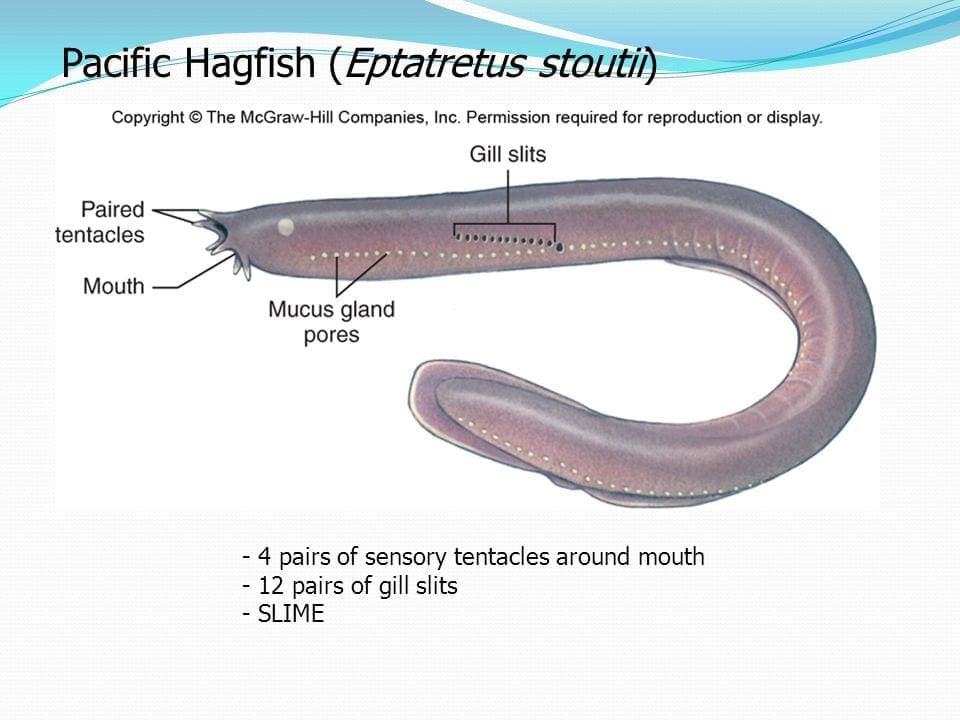
Petromyzontiformes
=lamprey=
-well developed eyes
-teeth and oral disc
-no paired fins
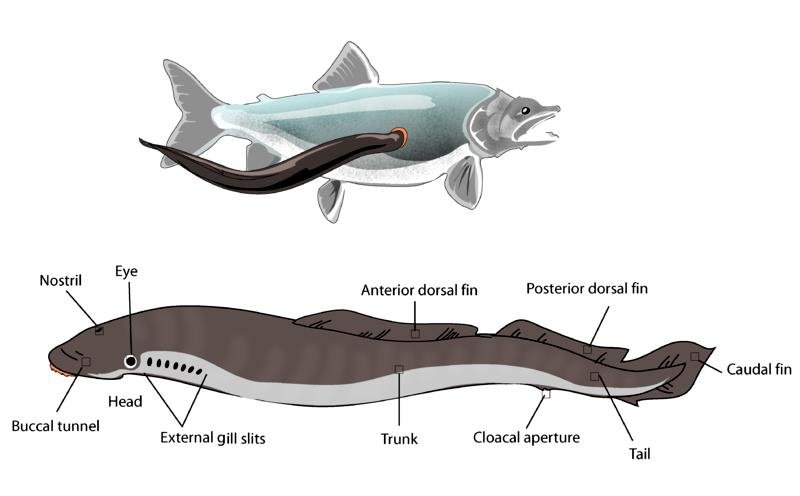
Superclass gnathostomata-Characteristic and class and clade?
-Jawed
-Clade Osteichthyes (Bone skeleton)
-Class Chondrichthyes (Cartilage skeleton)
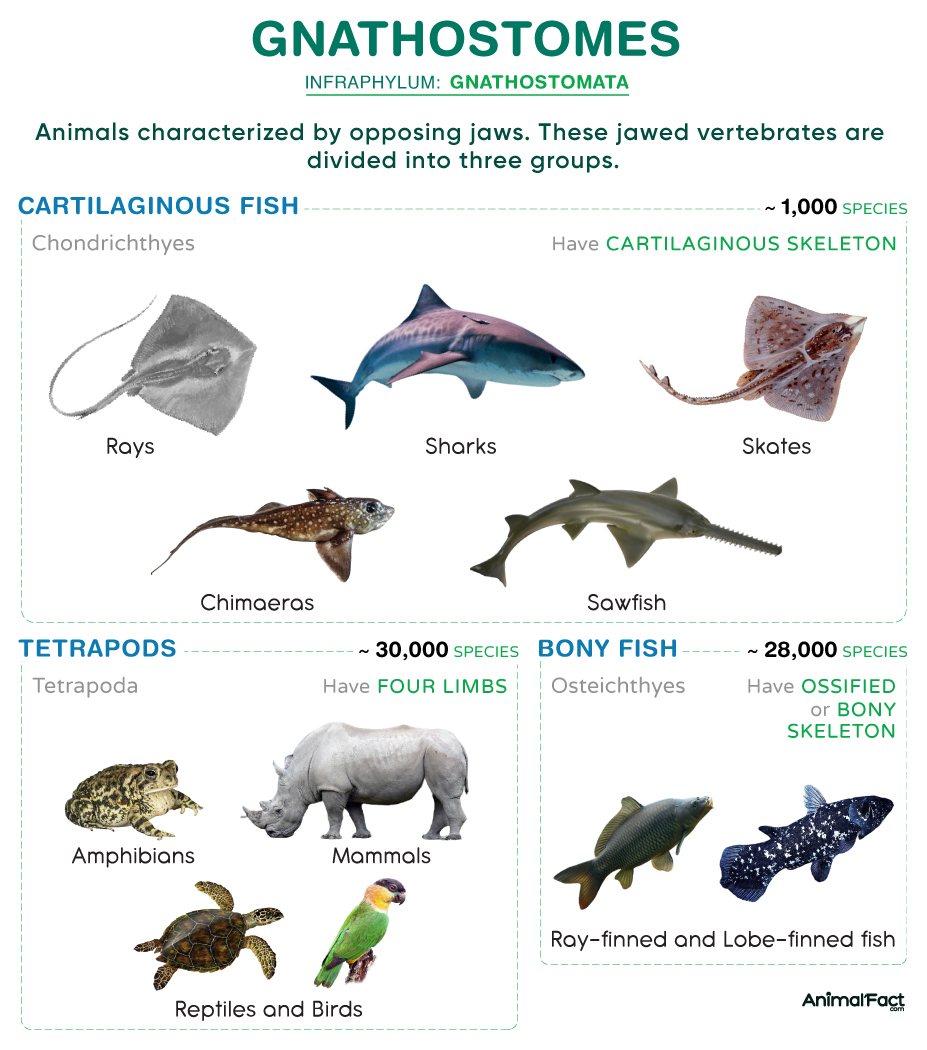
Clade Osteichthyes (Bone skeleton): Two classes? (What are the subclasses?)+characteristics
Bony fishes, jawed
Class Sarcopterygii (Fleshyfins)
Class Actinopterygii (Ray fins)
Subclass chondrostei (Primitive)
Subclass Neopterygii (Modern)
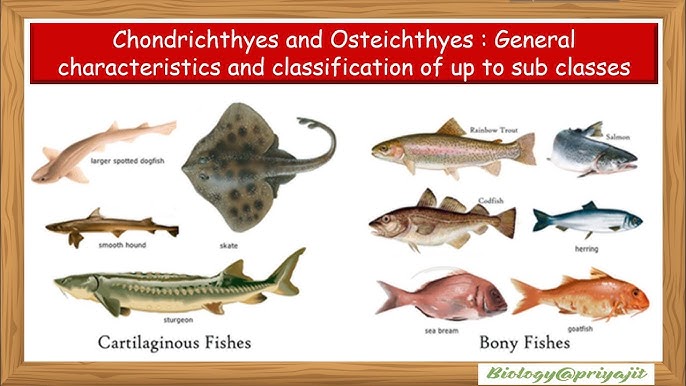
Class Sarcopterygii (characteristics and order)
=Fleshy Fins, bony,jawed=
-lepidosireniformes (lungfish)
Lepidosireniformes
=lungfish=
-elongate body
-large cycloid scales
-fins long and filamentous
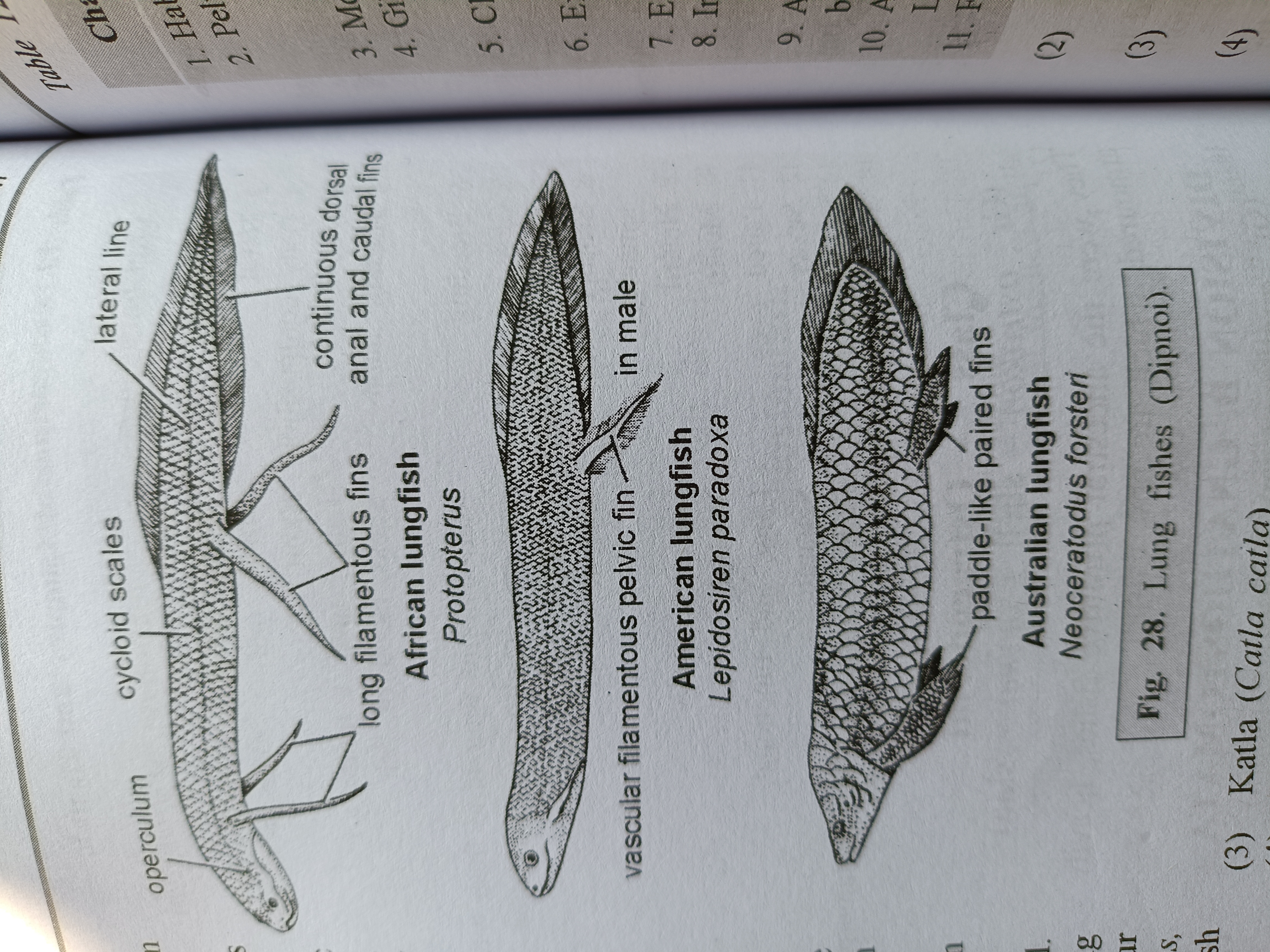
Class Actinopterygii (Characteristics and subclasses)
=ray fins,bony fish,jawed=
-Subclass:Chondrostei (primitive)
-Subclass:Neopterygii (modern)
Subclass Chondrostei (characteristic and orders?)
=primitive, ray fin, bony fish,jawed=
-acipenseriformes (sturgeous and paddlefish)sturgeons
Class Chondrichthyes (Characteristics and orders?)
=cartilaginous fishes, jawed
orders
squaliformes (dogfish sharks)
rajiformes (skates)
chimaeriformes (chimaeras)
squaliformes
=dogfish sharks
fusiform body
placoid scales
heterocercal tail
gill slits behind head
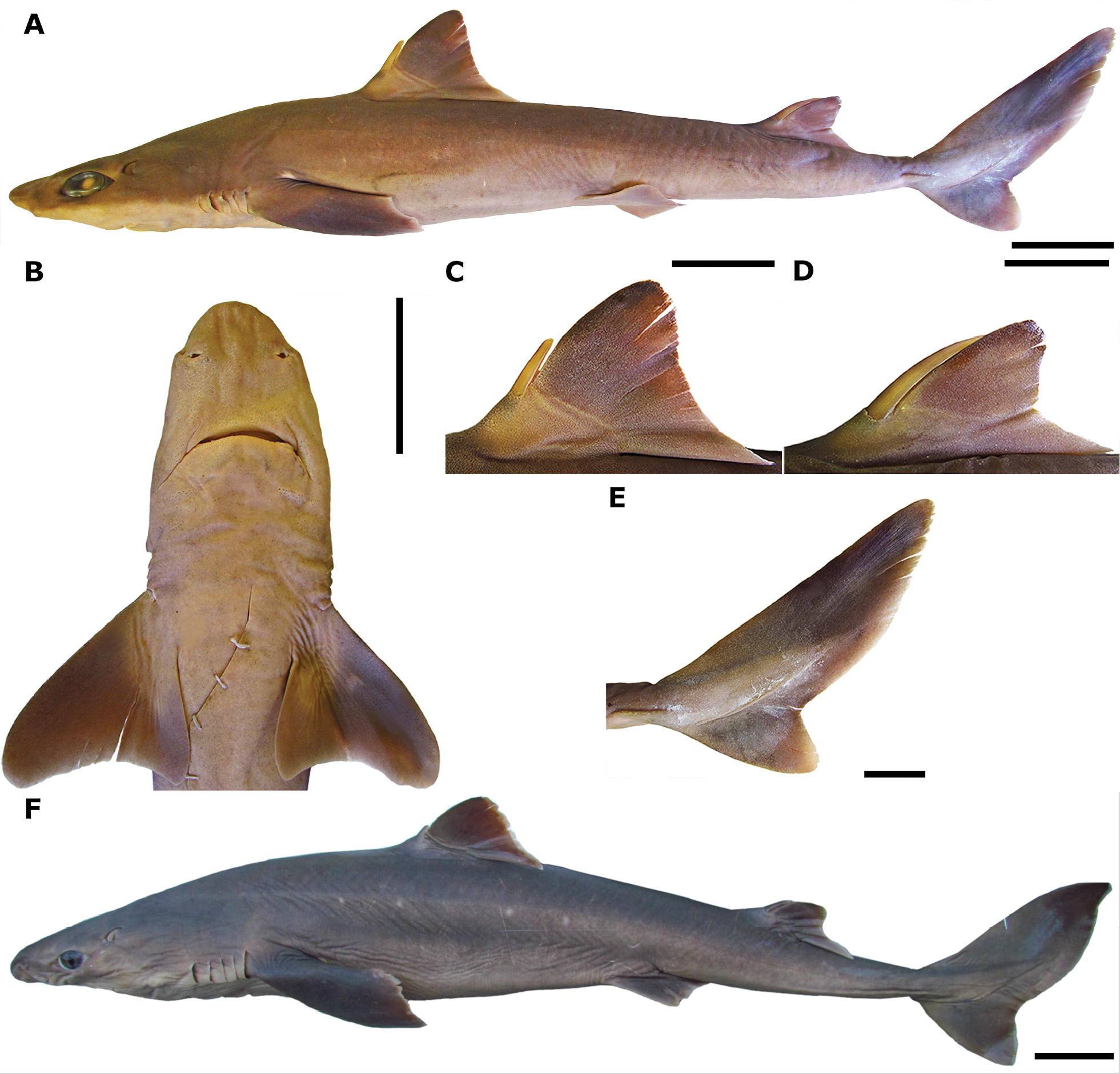
rajiformes
=skates
body flattened
pectoral fin expanded for swimming
mouth and gill slits on bentral surface
holes (spiracles) behind eye permit inflow of water current
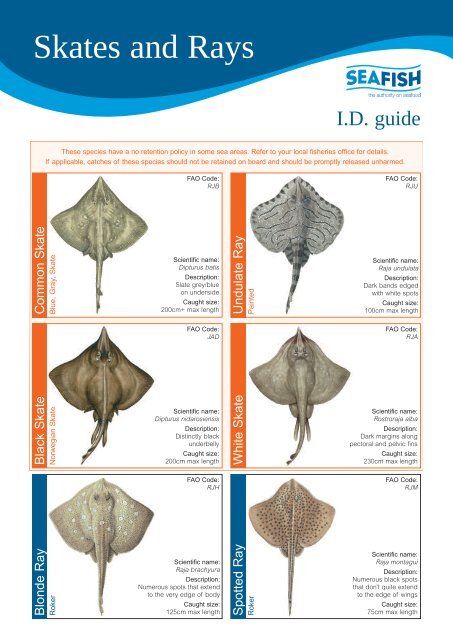
Chimaeriformes
=chimaeras
tapering tail
skin essentially naked
poisonous dorsal fin spine
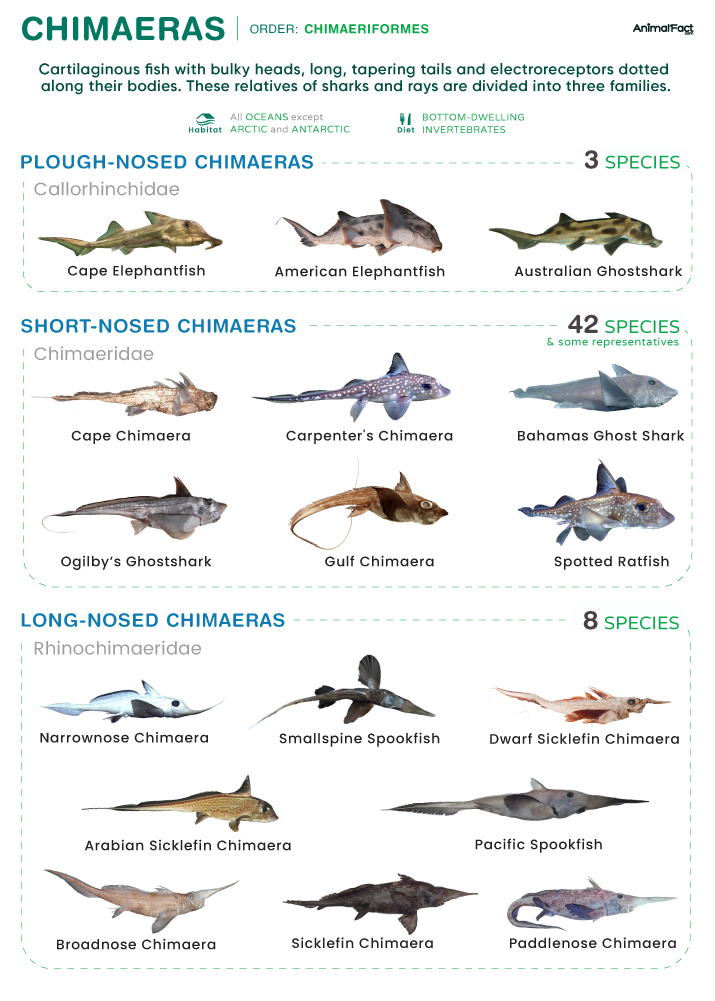
Diphycercal Tail
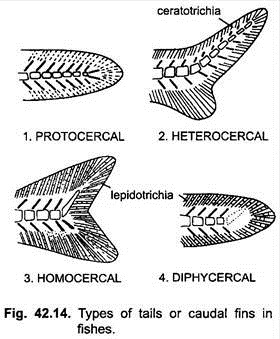
Heterocercal tail (Draw)
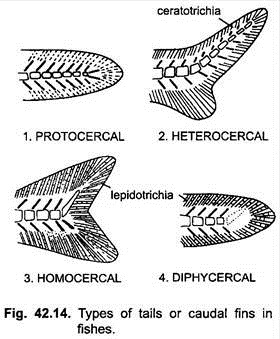
Homocercal tail (Draw)
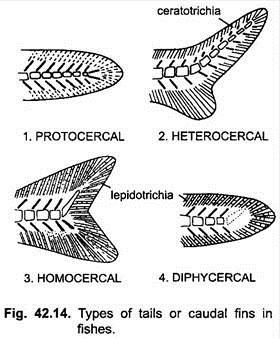
Placoid Scales (Draw) and what fish?
Cartilaginous fishes (small can’t see scales) Sharks and rays
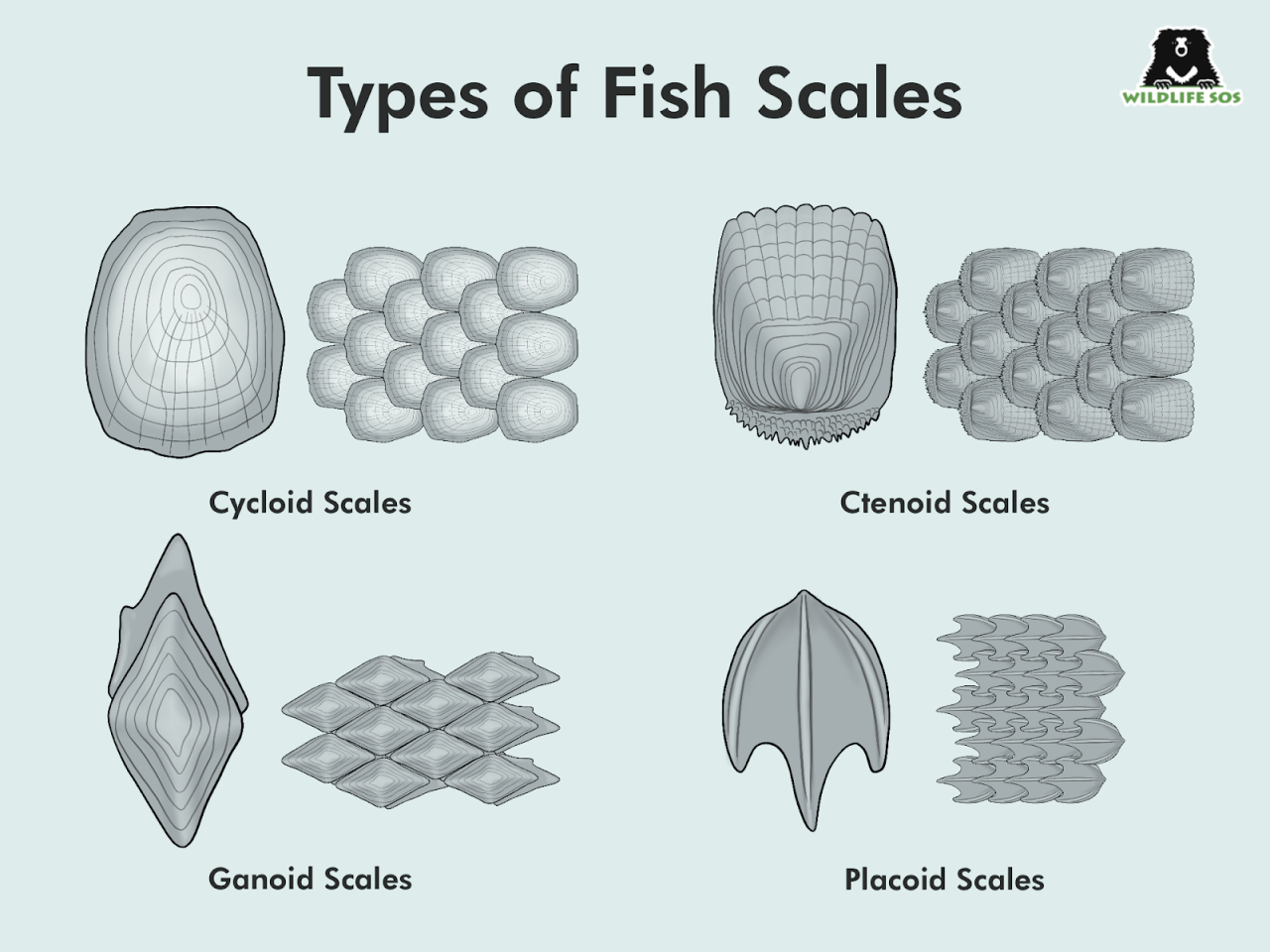
Ctenoid scales (Draw) and what fish?
Flatfish/Flounders (Rough)
Ganoid Scales (Draw) and what fish?
Ganoid scales are tough, bony scales found in some fish, like paddlefish and sturgeons.
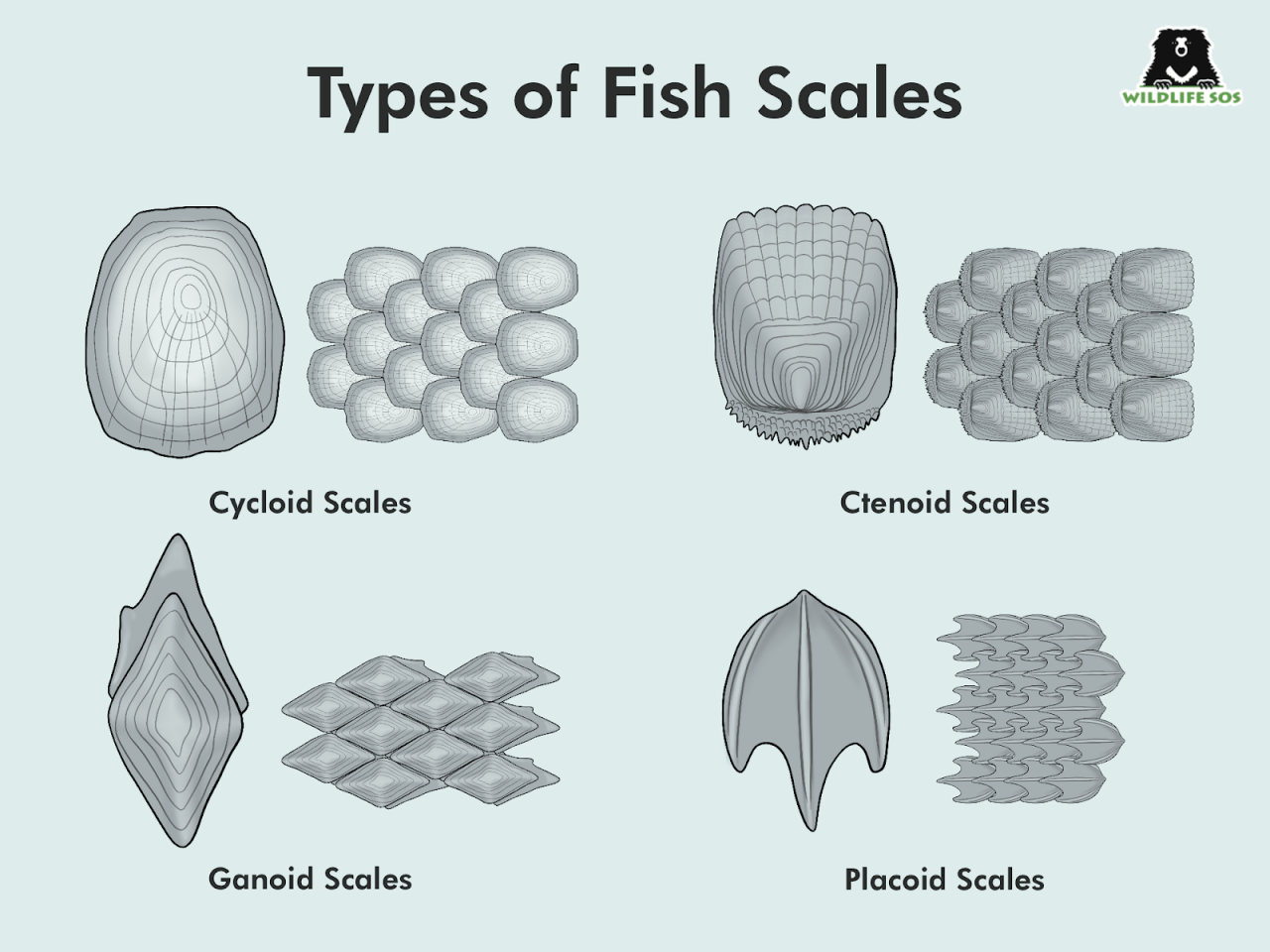
Cycloid Scales (Draw) and what fish?
Cycloid scales are smooth, overlapping, and found in bony fish such as salmon,carp,minnows,suckers,shiners
Fin key (draw)
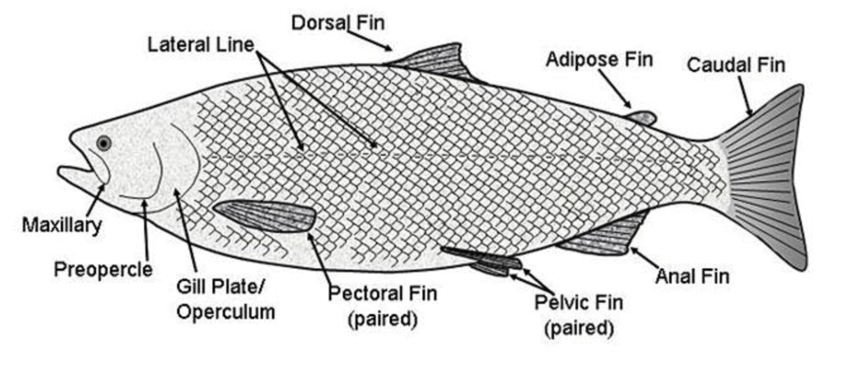
Body shape key (draw)
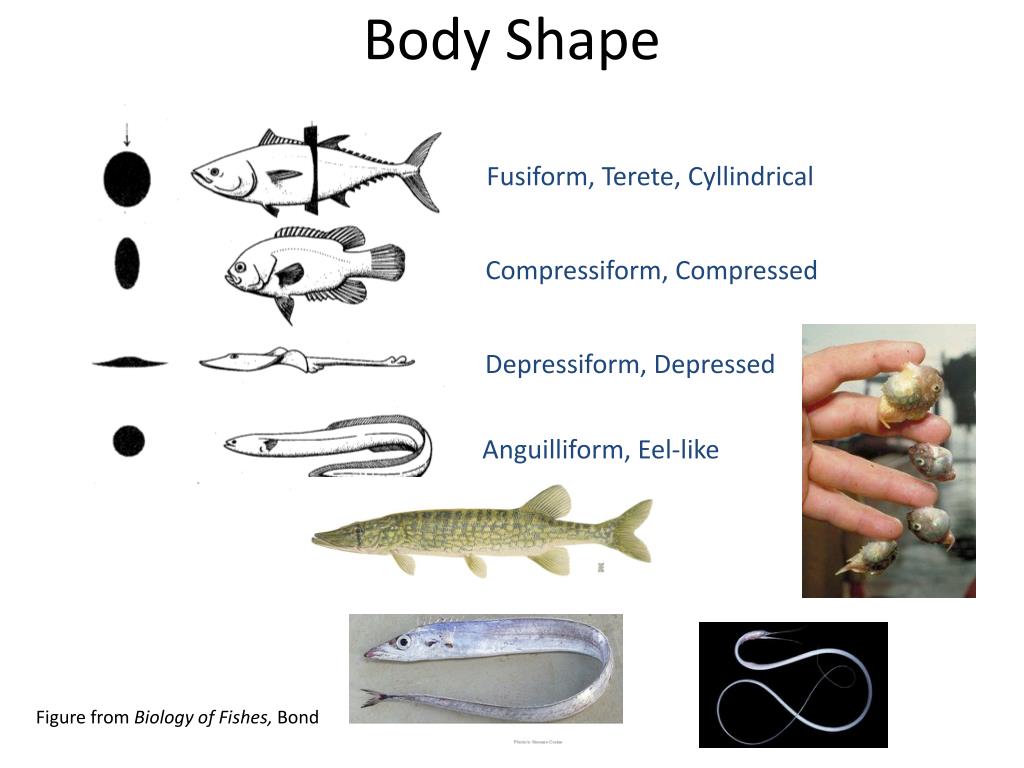
Devonian (Age of________)
Fishes
Carboniferous (Age of ________)
Amphibians
Gymnophiona
Order of amphibians also known as caecilians, characterized by their elongated, limbless bodies and burrowing habits.
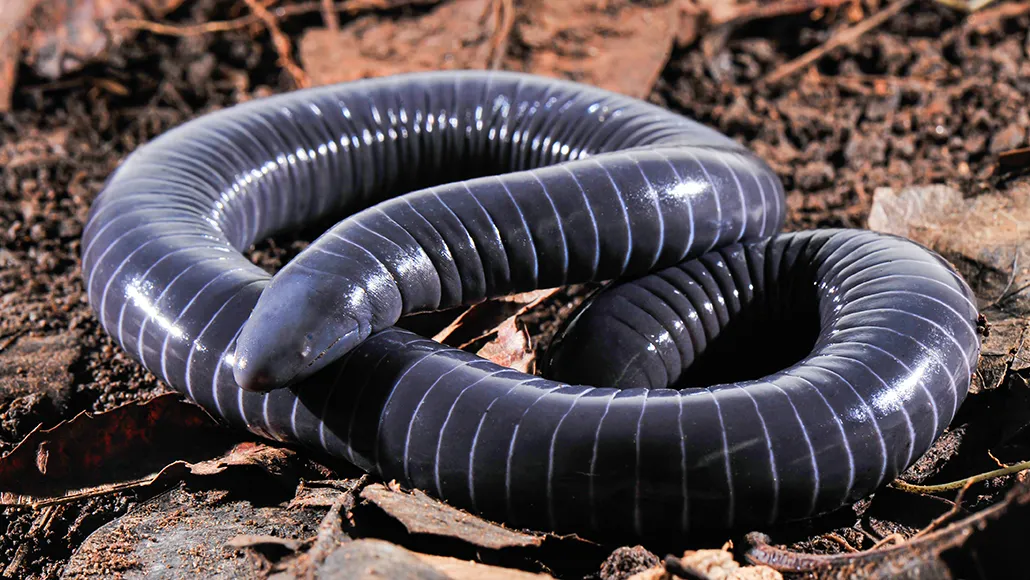
Urodela (caudata)
Order of amphibians that includes salamanders and newts, distinguished by their lizard-like bodies and presence of tails (show bone loss)
Anura
Order of amphibians that includes frogs and toads, characterized by their jumping abilities, tailless adult forms, and typically a smooth or warty skin, metamorphic
Amphibian Characteristics
-Terrestrial and aquatic
-Legless and/or gilled larval stage
-smooth/unpermeable skin
-egg without shell
-generally oviparous
Why was there a shift to land (amphibians)?
predation, food(fitness),competitive avoidance
Environment-shallow seas, predators in ocean
Tiktaalik roseae
-Fossil found in Canada
-Transitional fossil with mixed features (fish and amphibian)
-Fins with wrists (MOST IMPORTANT)
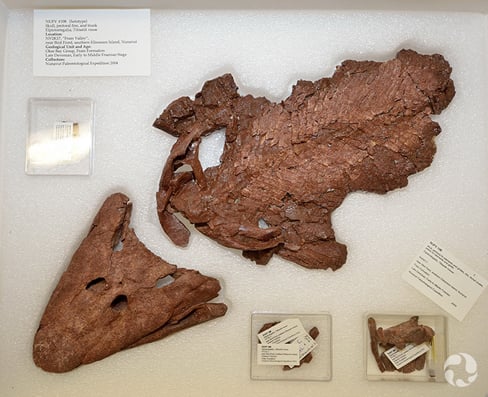
Mesozoic (Age of _____)
Reptiles
Class Reptilia (Sauropsids)
-Testudines (turtles)
-Squamata (lizards, snakes, wormlizards)
-Rhynchocephalia (primitive lizard
-Crocodilia (crocidiles and alligators)
Reptiles are a _______ group
Paraphyletic
Don’t include birds
Reptilian Characteristics
-Amniotic Egg
-lack larval stage
-impermeable skin
-lungs
-ecotherms
-3 chambered heart
Amniotic Egg
-Breaks ties to water (aqueous environment in the egg)
-amnion surrounding the embryo (makes aqueous environment in the egg)
-allantois (N waste)
-Yolk (nutrients)
-not hard shell always
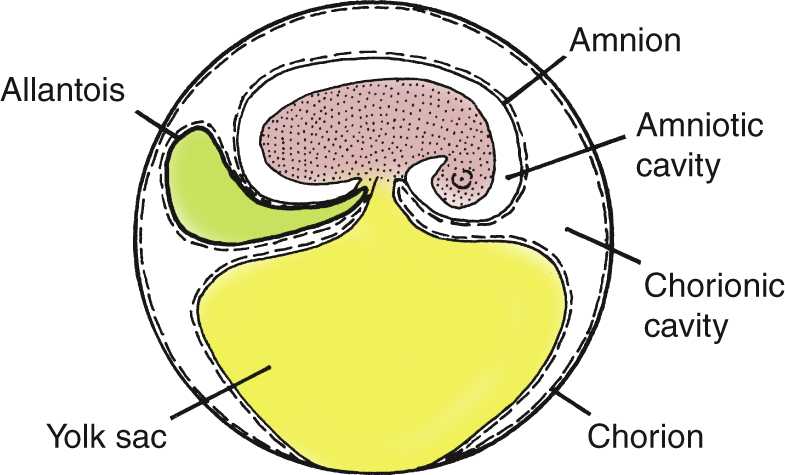
Amniote Characteristics
-amniotic egg
-Differ in number of temporal fenestrae
Anapsid (no opening behind eye)
Synapsid (1 opening behind eye)
Diapsid (2 openings behind eye)
Rhipidistans
Tetrapodomorph, had ideal characteristics to transition to land, shallow water predators, double breathers (had gills and open air passageways)
Basal Reptiliomorphs
domed skull with some kinesis
more terretrial
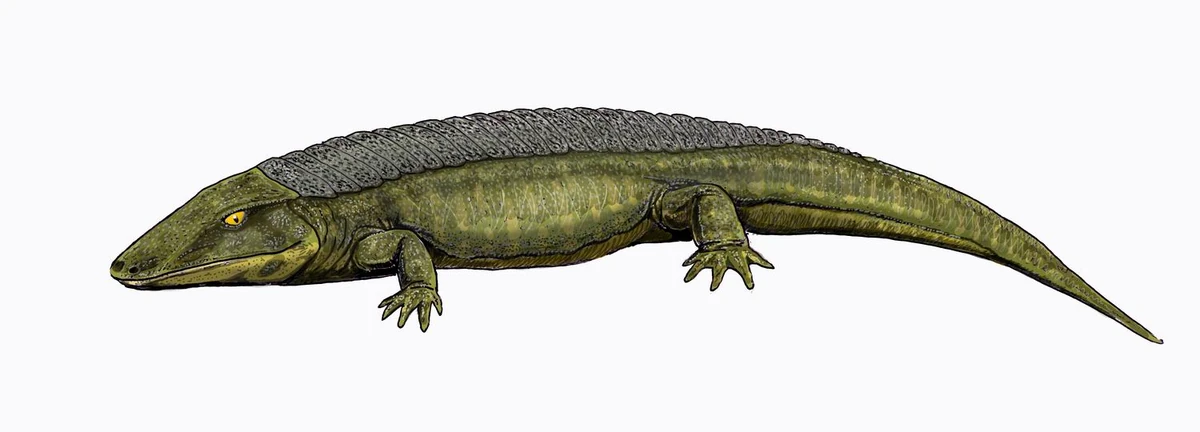
Cotylosaurs
Stem amniotes
lizard like, insect eaters
skull slightly amphibian
skeletal generally more reptilian
Order Testudines
Turtles!
anapsid
aquatic/terrestrial
Main groups: cryptodira and pleurodira
carapace and plastron
sister to crocidles and birds
**anapsid secondarily derived
Diapsids (what is it? + groups?)
2 temporal openings
2 major groups- lepidosauria (most living reptiles) & archosauria (dinosaurs,birds)
Squamate Lizard (characteristics?)
moveable eyelids
ear openings
limbs
diurnal
Serpentes
limbless
no external ear
no eyelids
snakes HAD limbs (limb loss)
most terrestrial
Diapsid Archosaurs
The dinosaurs! (and crocodilia)
Dominant during mesozoic
died due to meteor/nuclear winter
Extinct Diapsids?
Order Ichthyosauria (dolphin look-a-like but not example of convergent evolution)
Order Plesiosauria (lochness monster lol)
Extant Diapsids?
Diapsid Lepidosaurs
Order Rhynchocephalia (living/primitive fossil reptile)
Order Squamata (lizards,snakes,worm lizards)
Stem Archosaurs
Order Thecodonta
Order Crocodilia
Extant
alligators and crocidiles
long,tubular bodymlong snout with tipped nostrils
semiaquatic
Order Pterosaunia
Pterodactyls
wing membrane
unkeeled sternum (Unlike birds)
Order Ornithischia
bird hipped heribore dinos
some quadrapedal and some bipedal
many times prey for theropods
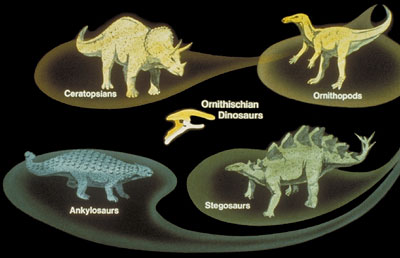
Order Saurischia
2 groups- theropods (bi) and sauropods (quad & herbivores and huge)
Limb under body posture
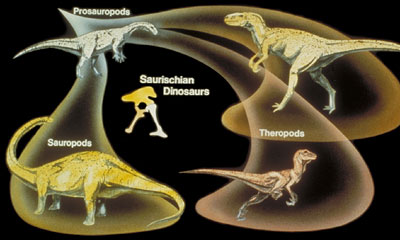
Bird Characterisitcs
Feathers
4 chambered heart
strictly oviparous
one ear ossicle (ear bone)
endothermic homeothermic
flow through respiratory system
Bill (no teeth)
Hollow/fusion of bones
excrete uric acid
What changed so birds could fly? (Evolutionary Changes)
weight reduction
bones are hollow and often fused
one ovary, gonads reduced in off season
loss of teeth
rapid digestion
Size reduction (much smaller than other vertebrates before)
Flapping flight mechanics
feathers
homeothermy
keeled sternum
furcula
Stem Paraves
Derived group of theropods with birdlike characterics (bird dino!)
flexible rotating wrists
shift in shoulder join
(prey manipulation and range of motion)
keeled sternum+flappable arms
furcula
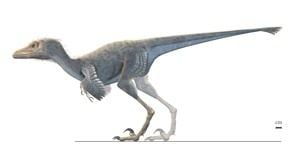
Archeopteryx
Link between dinosaurs and birds (had both traits)
Transitional fossil (helped darwin’s theory since same time ish)
IMPORTANT BIRD FOSSIL
clawed forelimbs
teeth
long bony tail
sternum unkeeled
feathers
furcula
What are the 4 hypotheses of Flight Evolution?
1.Arboreal (trees down)
2.Cursorial (ground up)
3.Cursorial II (trap prey)
4.Cursorial III (water up)
Acanthostega
Extinct
-More aquatic than terrestrial
-ceratobrachials (internal fish like gills)
-tail long and fish like with fin rays
-polydactyly (more than 5 digits(has 8))
**implies that 5 toed condition is derived
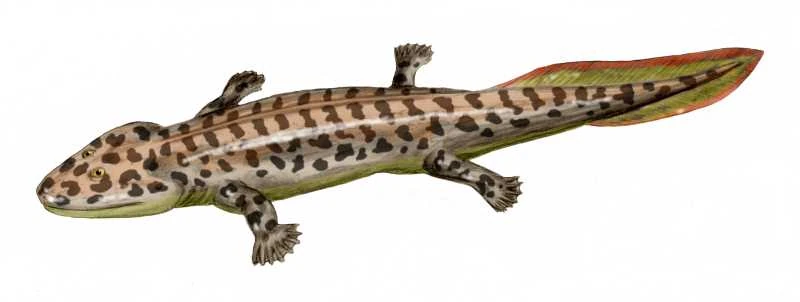
Ichthyostega
Extinct
1st good fossil of land vertebrate
vertebrae fishlike (no interlocking connections)
pectoral and pelvic girdles are strong
polydactyly (7 digits)
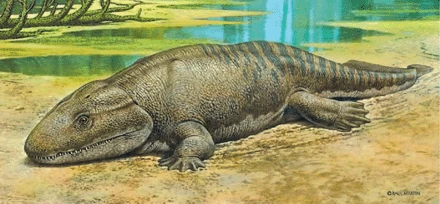
Temnospondyli
Extinct
more aquatic,flat immobile skull, had 4 fingers
Derpy flat dino
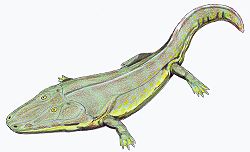
Lissamphibia
Extant
Modern amphibians
Loss of bone in skull,loss of scales,4 digits,2 middle ear bones,weak teeth, 3 chambered heart
Problems with Land Life? Fish>Amphibians
1 Gravity-affected skeleton on land
2 locomotion-propulsion use of limbs
3 breathing- oxygen more concentrated, gills collapse and desiccate
4 feeding-must use jaws,teeth and tongue
5 reproduction- eggs desiccate quickly
6 outer covering- desiccate
7 pumping blood-gravity
8 sensory systems conduct differently
Cretaceous + after K-Pg (Age of ________)
Birds